|
Out of all the
species walking, flying, slithering or swimming, there aren't
many who have been around as long, survived as well, or come in
so many shapes and kinds as the shark. The earliest evidences of
sharks are isolated spines, teeth and scales that appeared about
430 million years ago in the Silurian Period, known as the
"Age of Fishes". Sharks have a sleek, streamlined
design which helps them swim without using up a lot of
energy.They certainly need to conserve their energy because they
never really sleep and most of them never stop swimming.
Until the 16th
century, sharks were known to mariners as "sea dogs". The etymology of the word "shark" is uncertain. One theory is that it derives from the Yucatec Maya word
xok, pronounced 'shok'. Evidence for this etymology comes from the OED, which notes the name "shark" first came into use after Sir John Hawkins' sailors exhibited one in London in 1569 and used the word
"sharke" to refer to the large sharks of the Caribbean Sea.
An alternate etymology states that the original sense of the word was that of "predator, one who preys on others" from the German
Schorck, a variant of Schurke "villain, scoundrel" (cf. card shark, loan shark, etc.), which was later applied to the fish due to its predatory behaviour.
Sharks are a group of fishes characterized by a cartilaginous skeleton, five to seven gill slits on the sides of the head, and pectoral fins that are not fused to the head. Modern sharks are classified within the clade Selachimorpha (or Selachii), and are the sister group to the rays. However, the term "shark" has also been used for extinct members of the suborder Elasmobranchii outside the Selachimorpha, such as Cladoselache and Xenacanthus. Under this broader definition, the earliest known sharks date from more than 420 million years
ago.
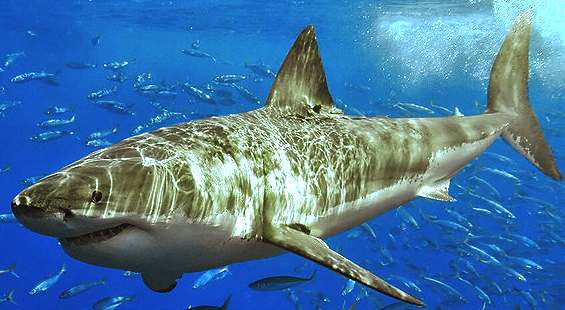
Since that time, sharks have diversified into over 400 species. They range in size from the small dwarf lanternshark (Etmopterus perryi), a deep sea species of only 17 centimetres (6.7 in) in length, to the whale shark (Rhincodon typus), the largest fish in the world, which reaches approximately 12 metres (39 ft). Despite its size, the whale shark feeds only on plankton, squid, and small fish by filter feeding. Sharks are found in all seas and are common down to depths of 2,000 metres (6,600 ft). They generally do not live in freshwater although there are a few known exceptions, such as the bull shark and the river shark that can survive in both seawater and
freshwater. They breathe through five to seven gill slits. Sharks have a covering of dermal denticles that protects their skin from damage and parasites in addition to improving their fluid dynamics. They also have several sets of replaceable
teeth.
Well-known species such as the great white shark, tiger shark, blue shark, mako shark, and the hammerhead shark are apex predators—organisms at the top of their underwater food chain. Their predatory skill fascinates and frightens humans, even though their survival is threatened by human-related activities.
Some sharks are
fierce predators, and would be happy to eat you if they
encountered you. Almost any shark six feet or longer is a
potential danger, but three species have been identified
repeatedly in attacks: the
Great White Shark, the
Tiger Shark and the Bull
Shark . All three live world wide, reach large sizes and eat
large prey such as marine mammals or sea turtles. But most
sharks never grow longer than five feet and never even see
anyone with legs and arms anyway. People kill thousands more
sharks every year than sharks kill people.
Sharks take about
as long to mature as we do. Some of them become adults in their
teens. A mother shark carries her babies inside her body while
they develop, sometimes for more than a year. Even so, some
sharks are born inside an egg which they have to crack open.
They spend early portions of their lives in nursery grounds.
Some of the advantages sharks have over people is that they keep
growing new teeth, they don't have breakable bones, and they are
not prone to get cancer. Sometimes sharks are referred to as
swimming computers because of the six
senses which they possess: vision,
hearing,
vibration,
smell,
taste and electro-perception.
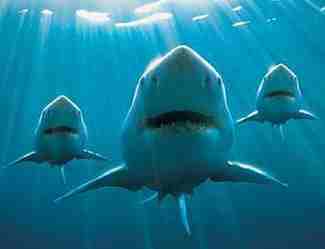
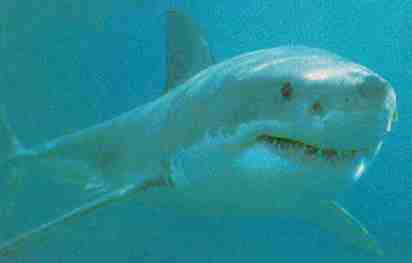
The great white shark, Carcharodon carcharias, also known as the great white, white pointer, white shark, or white death, is a large lamniform shark found in coastal surface waters in all major oceans. It is known for its size, with the largest individuals known to have approached or exceeded 6 metres (20 ft) in
length, and 2,268 kilograms (5,000 lb) in weight. This shark reaches maturity at around 15 years of age and can have a life span of over 30 years.
The great white shark is arguably the world's largest known extant macropredatory fish and is one of the primary predators of marine mammals. It is also known to prey upon a variety of other marine animals including fish and seabirds. It is the only known surviving species of its genus, Carcharodon, and is ranked first in a list of number of recorded attacks on
humans. The IUCN treats the great white shark as vulnerable, while it is included in Appendix II of
CITES.
The best selling novel Jaws by Peter Benchley and the subsequent blockbuster film by
Steven Spielberg depicted the great white shark as a "ferocious man eater". In reality, humans are not the preferred prey of the great white
shark.
TAXONOMY
Sharks belong to the superorder Selachimorpha in the subclass Elasmobranchii in the class Chondrichthyes. The Elasmobranchii also include rays and skates; the Chondrichthyes also include Chimaeras. It is currently thought that the sharks form a polyphyletic group: some sharks are more closely related to rays than they are to some other sharks.
The superorder Selachimorpha is divided into Galea (or Galeomorphii), and Squalea. The Galeans are the Heterodontiformes, Orectolobiformes, Lamniformes, and Carcharhiniformes. Lamnoids and Carcharhinoids are usually placed in one clade, but recent studies show the Lamnoids and Orectoloboids are a clade. Some scientists now think that Heterodontoids may be Squalean. The Squalea is divided into Hexanchoidei and Squalomorpha. The Hexanchoidei includes the Hexanchiformes and Chlamydoselachiformes. The Squalomorpha contains the Squaliformes and the Hypnosqualea. The Hypnosqualea may be invalid. It includes the Squatiniformes, and the Pristorajea, which may also be invalid, but includes the Pristiophoriformes and the
Batoidea.
More than 440 species of sharks split across eight orders, listed below in roughly their evolutionary relationship from ancient to
modern:-
-
Hexanchiformes: Examples from this group include the cow sharks and frilled shark, which somewhat resembles a marine snake.
-
-
Squaliformes: This group includes the bramble sharks, dogfish and
roughsharks, and prickly shark.
-
Pristiophoriformes: These are the sawsharks, with an elongated, toothed snout that they use for slashing their prey.
-
-
Squatiniformes: Also known as angel sharks, they are flattened sharks with a strong resemblance to stingrays and skates.
-
-
Heterodontiformes: They are generally referred to as the bullhead or horn sharks.
Orectolobiformes: They are commonly referred to as the carpet sharks, including zebra sharks, nurse sharks, wobbegongs and the whale shark.
-
-
Carcharhiniformes: Commonly known as
groundsharks, the species include the blue, tiger, bull, grey reef, blacktip reef, Caribbean reef, blacktail reef, whitetip reef and oceanic whitetip sharks (collectively called the requiem sharks) along with the
houndsharks, catsharks and hammerhead sharks. They are distinguished by an elongated snout and a nictitating membrane which protects the eyes during an attack.
-
-
Lamniformes: They are commonly known as the mackerel sharks. They include the goblin shark, basking shark, megamouth shark, the thresher sharks, shortfin and longfin mako sharks, and great white shark. They are distinguished by their large jaws and ovoviviparous reproduction. The Lamniformes include the extinct
megalodon, Carcharodon megalodon.
ANATOMY
Teeth
Shark teeth are embedded in the gums rather than directly affixed to the jaw, and are constantly replaced throughout life. Multiple rows of replacement teeth grow in a groove on the inside of the jaw and steadily move forward in comparison to a conveyor belt; some sharks lose 30,000 or more teeth in their lifetime. The rate of tooth replacement varies from once every 8 to 10 days to several months. In most species, teeth are replaced one at a time as opposed to the simultaneous replacement of an entire row, which is observed in the cookiecutter
shark.
Tooth shape depends on the shark's diet: those that feed on mollusks and crustaceans have dense and flattened teeth used for crushing, those that feed on fish have needle-like teeth for gripping, and those that feed on larger prey such as mammals have pointed lower teeth for gripping and triangular upper teeth with serrated edges for cutting. The teeth of plankton-feeders such as the basking shark are small and
non-functional.
Skeleton
Shark skeletons are very different from those of bony fish and terrestrial vertebrates. Sharks and other cartilaginous fish (skates and rays) have skeletons made of cartilage and connective tissue. Cartilage is flexible and durable, yet is about half the normal density of bone. This reduces the skeleton’s weight, saving
energy. Because sharks do not have rib cages, they can easily be crushed under their own weight on
land.
Jaw
Jaws of sharks, like those of rays and skates, are not attached to the cranium. The jaw's surface (in comparison to the shark's vertebrae and gill arches) needs extra support due to its heavy exposure to physical stress and its need for strength. It has a layer of tiny hexagonal plates called "tesserae", which are crystal blocks of calcium salts arranged as a
mosaic. This gives these areas much of the same strength found in the bony tissue found in other
animals.
Generally sharks have only one layer of tesserae, but the jaws of large specimens, such as the bull shark, tiger shark, and the great white shark, have two to three layers or more, depending on body size. The jaws of a large great white shark may have up to five
layers. In the rostrum (snout), the cartilage can be spongy and flexible to absorb the power of impacts.
Fins
Fin skeletons are elongated and supported with soft and un-segmented rays named ceratotrichia, filaments of elastic protein resembling the horny keratin in hair and
feathers. Most sharks have eight fins. Sharks can only drift away from objects directly in front of them because their fins do not allow them to move in the tail-first
direction.
Dermal denticles
Unlike bony fish, sharks have a complex dermal corset made of flexible collagenous fibers and arranged as a helical network surrounding their body. This works as an outer skeleton, providing attachment for their swimming muscles and thus saving
energy. Their dermal teeth give them hydrodynamic advantages as they reduce turbulence when
swimming.
Tails
Tails provide thrust, making speed and acceleration dependent on tail shape. Caudal fin shapes vary considerably between shark species, due to their evolution in separate environments. Sharks possess a heterocercal caudal fin in which the dorsal portion is usually noticeably larger than the ventral portion. This is because the shark's vertebral column extends into that dorsal portion, providing a greater surface area for muscle attachment. This allows more efficient locomotion among these negatively buoyant cartilaginous fish. By contrast, most bony fish possess a homocercal caudal
fin.
Tiger sharks have a large upper lobe, which allows for slow cruising and sudden bursts of speed. The tiger shark must be able to twist and turn in the water easily when hunting to support its varied diet, whereas the porbeagle shark, which hunts schooling fish such as mackerel and herring, has a large lower lobe to help it keep pace with its fast-swimming
prey. Other tail adaptations help sharks catch prey more directly, such as the thresher shark's usage of its powerful, elongated upper lobe to stun fish and squid
SHARK LINKS:
New
England Aquarium http://www.neaq.org/
This
is the well-designed Web site of the New England Aquarium,
cosponsor with WGBH-TV of "Island of the Sharks," on
which this Online Adventure Web site is based.
IUCN
Shark Specialist Group
http://www.flmnh.ufl.edu/fish/organizations/ssg/ssg.htm
Learn
how the Shark Specialist Group is working to help conserve
threatened species of sharks worldwide.
Mote
Marine Laboratory: The Center for Shark Research http://www.mote.org/~rhueter/shark_research.phtml
This
nonprofit institution's site offers substantial info on shark
diversity, tagging, and attacks as well as descriptions of
their research programs on shark vision, feeding, and more.
The
Pelagic Shark Research Foundation http://www.pelagic.org/
This
foundation works to develop projects that contribute to a
better understanding of sharks. Check out the shark video
clips, find out about the sharks of Monterey Bay, and read
about shark evolution and anatomy.
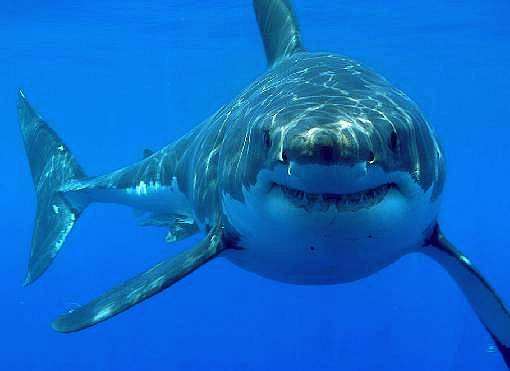
Time to spare a
thought for these endangered and rare species. Reach out to
all your friends and loved ones to spread awareness through
our ecards.
Send Free Online Greeting Cards to your friends & loved
ones. ALL cards are absolutely FREE !!!
Shark
Myths http://www.marinelab.sarasota.fl.us/~rhueter/sharks/myths.phtml
This
site, also created by Mote Marine Laboratory, debunks common
shark myths with the help of witty cartoons.
Costa
Rica! http://www.costarica.com/
The
official Web site for the country, this rich site offers
detailed information on everything from adventure travel to
business opportunities. Click here for the Embassy of Costa
Rica as well.
The
Undersea Hunter http://www.underseahunter.com/
This
thorough site gives you everything you'd ever want to know
about the Undersea Hunter, the live-aboard dive boat on which
this expedition is based at Cocos Island.

The
Cocos Island Research Center http://www.istmo.com/cocos/index.html
In
this quirkily fun site, delve into the island's unique
history, including its recent designation as a UNESCO World
Heritage site, and explore scads of useful links. A description of Cocos Island as a tourist destination. Offers a map as well as a link to an article on scuba diving at Cocos Island.
Secrets of the Ocean Realm http://www.pbs.org/oceanrealm
This
Web site, which accompanied the acclaimed PBS series of the
same name, features an interview with Howard and Michele Hall
on the challenges of underwater filmmaking.
Cocos
Island | Sharkmasters
| World of
Sharks | Dispatches
E-mail |
Resources
| Site
Map | Sharks
Home
The
Shark Research Institute Web Site
The Shark Research
Institute (SRI), a multi-disciplinary non-profit 501(c)(3)
scientific research organization, was created to sponsor and
conduct research on sharks and promote the conservation of
sharks. Founded in 1991 at Princeton, New Jersey, USA, SRI has
field offices in Canada, the Galapagos Islands, Honduras,
Mexico, South Africa and the Seychelles. A new
data collecting site has been established in Australia.
SRI works with the
scientific community, individuals and organizations concerned
about the health of our marine ecosystem, and marine resource
users: subsistence fishermen, sport divers, and the dive tourism
industry. SRI works to correct misperceptions about sharks and
stop the slaughter of 100 million sharks annually. A primary
goal is creating value for sharks as sustainable natural
resources for the dive tourism industry, particularly in
developing countries. By so doing, a steady revenue stream is
also generated for local fishers that might otherwise slaughter
the sharks for immediate gain. Current programs involve visual
and satellite tracking, behavioral and DNA studies of sharks,
environmental advocacy, publications and public education.
Island of
the Sharks Site Map
Scientific
Classification
Habitat
and Distribution
Physical
Characteristics
Senses
Behavior
Diet
and Eating Habits
Reproduction
Anatomy
and Physiology
Hydrodynamics
Longevity
and Causes of Death
Appendix:
Classification
Bibliography
Books
for Young Readers
Adventure
to Cocos Island
Dispatches
View
the Undersea World
Legends
and Lore
Explore
the Island
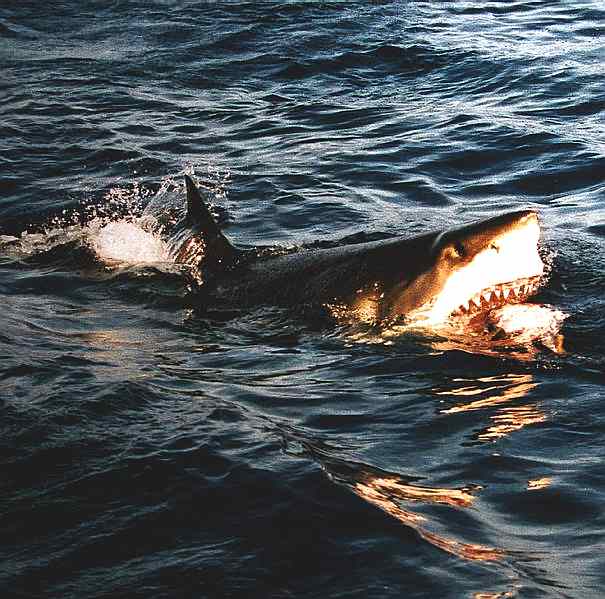
Dispatches
"This
is Cocos, This is Cool" (Oct. 19)
Taken
by Surprise (Oct. 17)
Of
Booby And Beebe (Oct. 15)
Courtship
of the Marbled Rays (Oct. 13)
The
Search for Lake Cocos (Oct. 11)
The
Magnificent Seven (Oct. 9)
Swimming
with Whitetip Reef Sharks (Oct. 7)
The
Director's Cut (Oct. 5)
Assault
on Cocos (Oct. 3)
Hammerheads
Sighted (Oct. 1)
The
PIG and the Process (Sept. 29)
Nature
Reigns at Cocos (Sept. 27)
Get
Used To It (Sept. 25)
Hammerheads
or Bust (September 23)
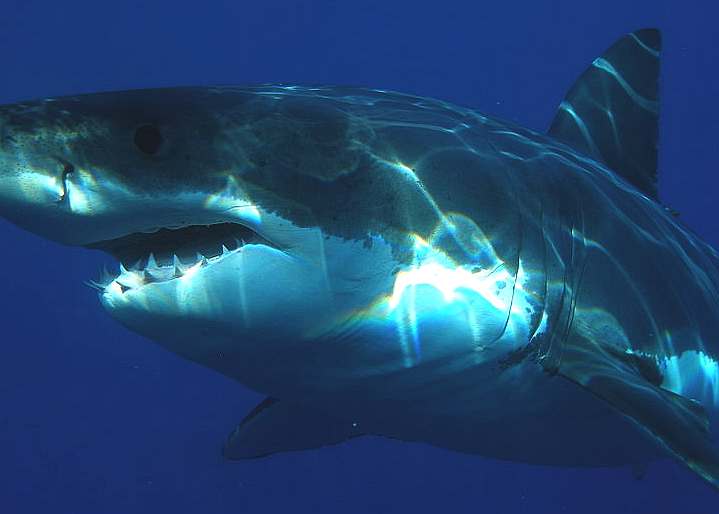
Sharkmasters
Dr.
Hammerhead
Exploding
Myths
Howard
& Michele's Excellent Adventure
Ask
the Expert
Questions and responses
posted: October
16, 1998
October
8, 1998
October
4, 1998
October
2, 1998
September
25, 1998
September
23, 1998
World
of Sharks
Who's
Who of Sharks
Close
Encounters
Clickable
Shark
The
Hunt (Hot Science)
Shark
Bytes
Shark
Attack! Teacher's Guide
Resources
Links
Books
Caribbean
Hotels - sharks page
Top
20 Shark Facts Presented by the Discovery Channel
Basic
Facts About Sharks From the Defenders of Wildlife
National
Geographic Presents: Animals—Whale Shark
Whale
Shark Facts by See the Wild
National
Ocean Services Reports That In General, Sharks Do Not Eat Humans
Island
of the Sharks Presents Shark Bytes
Sand
Tiger Shark by New York Aquarium
Bull
Shark (Carcharhinus leucas) by Shark Foundation Hai-Stiftung
Species
Kid
Zone Presents Types of Sharks
Shark
Species Introduction by Shark Savers
Oceana
Presents Sharks: Overview
The
Great White Shark, Presented by the University of California Museum of
Paleontology
Marine
Bio Presents Great White Sharks, Carcharodon carcharias
Tiger
Shark Photos, By the Florida Museum of Natural History
Museum
Victoria Presents Sharks
Research
Shark
Research Committee Presents Save the Sharks, Save the Oceans
Project
AWARE Presents Researching the Shark Fin Trade
Project
Oceanica Presents Satellite Tagging of Oceanic Sharks and Billfishes on
the Charleston Bump
Department
of Fish and Game Presents White Shark Tagging off Cape Cod
Tagging
Sharks a Chilling Task, By the Honolulu Advisor
US
New Presents Shark Attacks: Worry More About Lightening or Bees
The
Humane Society of the United States Presents Shark Conservation Act Wins
Final Congressional Approval
The
Pelagic Shark Research Foundation Presents Open Water: The Monterey
Bay/Marine Canyon Pelagic Shark Tagging Project
Safety
City
of Cape Town Presents Shark Safety Tips
Shark
Safety by the National Geographic Channel
Q
& A on Shark Safety by ABC News
Town
of Cottesloe Presents Beach Conditions and Shark Safety
Shark
Safety Tips By the Palm Beach Post News
Shark
Safety Tips By BBC Newsround
Education
Sharks
Quiz, Presented by Oracle Thinkquest
The
Great White Shark Quiz, Presented by Channel One News
Discovery
Education Presents Lesson Plan Library: Sharks
Shark
and Cultural Educational Resources, By the Monterey Bay Aquarium
Grades
11-12 Shark Lesson Plans, By the Atlantis Marine World
Whale
Shark Word Search by the Georgia Aquarium
Find
the Sharks, by Exploring Nature Educational Resource
Sea
Creatures, by Puzzles
|






